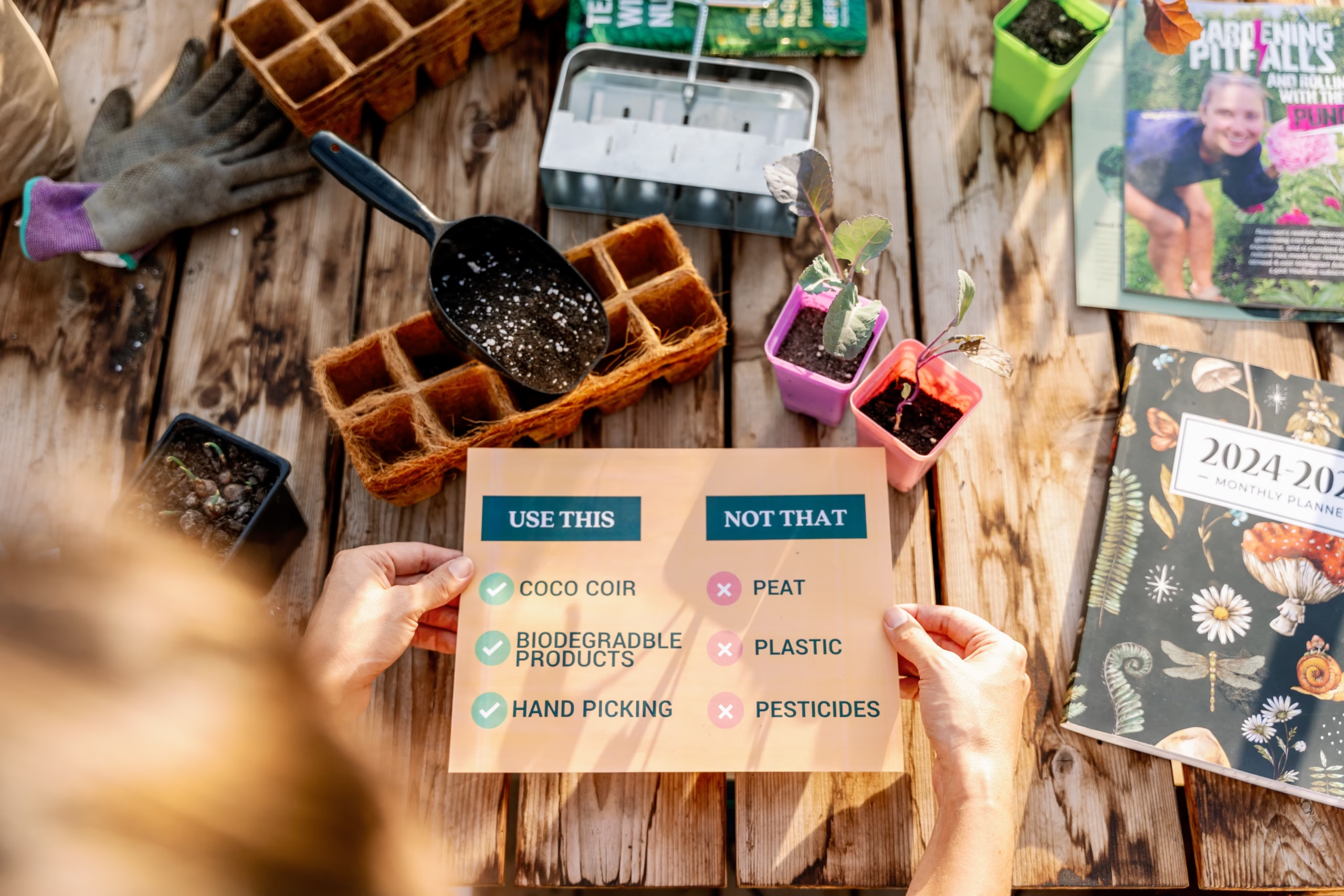

The housing market has become so expensive that many people can’t afford to buy a home. Which means that if you can’t buy, you rent. And many people believe that when they rent a place they can’t grow a garden. But I’m here to tell you that it’s possible to garden even if you rent your home, whether it’s an apartment, townhouse or home.
Unfortunately, not all landlords will allow you to dig up the lawn or build permanent structures so in today’s article we’re going to talk about how you can grow a garden with items that you can take with you when you move.
Before we start, I want to mention that there are incredible gardeners out there who grow only in pots – so don’t underestimate the power of planter pots. And just because you might not be living there forever, doesn’t mean that you shouldn’t enjoy a garden while you’re there. So let’s talk about all the ways you can build a garden, grow some fun plants and learn some new lessons.
First up, talk to your landlord. You know your landlord best – are they picky? are they relaxed? Are they a no-show landlord? Based on the type of owner they are will help you come up with a plan. If you have an absentee landlord you might be able to grow in pots and other temporary fixtures and not even let them know but if you have a landlord that is diligently coming by to work on the property then there’s some important things you’ll want to discuss.
If you live in an apartment building, you likely don’t need to talk to your landlord or superintendent. Just make sure you know the rules of the building as they often have rules that apply to balconies such as; no barbecues or you can’t screw things or hang things off the walls or ceiling of the balcony.

If you live in a townhouse or home, the first step is to let them know your intention to build a garden. You can ask if they’re ok with you putting in some raised beds and if they’re okay with it, all the better for you! If that isn’t an option, let them know you plan to grow only in pots that can easily be moved. Landlords like the idea of having the property be upgraded, or to look nice, but they don’t want to pay for it. So if you’re okay with making these upgrades to their property and paying for it, let them know. Also, assuring them that you’ll keep it well maintained and that you’ll clean it up when you move are important messages in order to have them agree.
If you live in a townhouse you likely have areas in your yard that are considered a “right of way” or are community areas that other tenants and homeowners have access to. So when you look to build your garden and speak with your landlord, make sure you’re clear that you won’t be blocking any right of way access points. If your landlord is a reasonable person, this should be sufficient to have them agree!
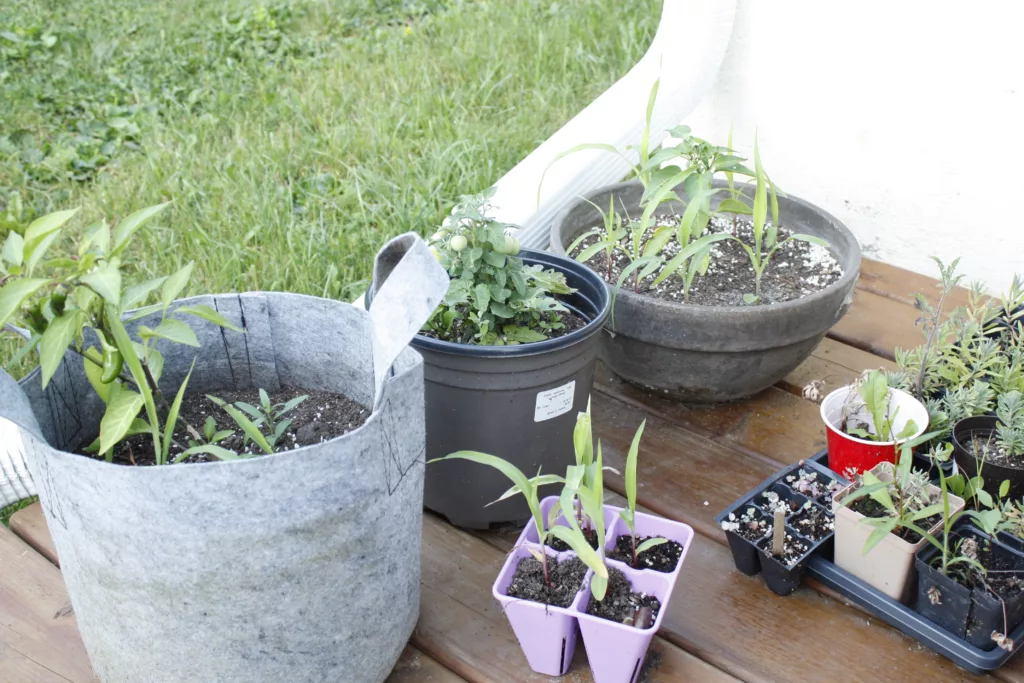
Ok – this picture I have here isn’t an inspiring photo for potted gardens. But I have seen some absolutely incredible gardens that have been created with 100% potted plants. If you want some inspiration you can check out this article or check out the work by Claus Dalby who is a wizard of container gardens! Once you flip through those photos it’ll hopefully inspire you to see that potted gardens can be beautiful and look as good as any other type of garden. And with new vegetable varieties coming out, there’s always a patio size variety that you can find to grow in your potted garden.
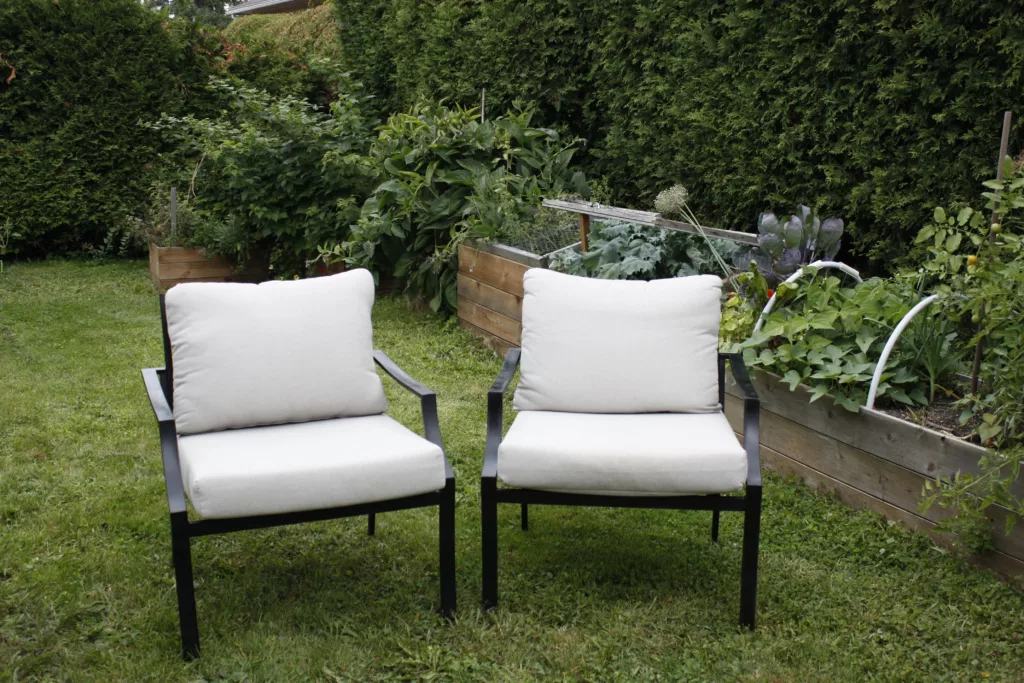
The chairs in the photo above are actually ones we got for free from our neighbourhood Facebook group and with a little bit of elbow grease and spray paint I updated them to look brand new! The benefit of getting a cozy outdoor furniture set is that you can take this with you if/when you move. The furniture helps you feel like it’s your space plus gives you somewhere to relax and enjoy your garden space.
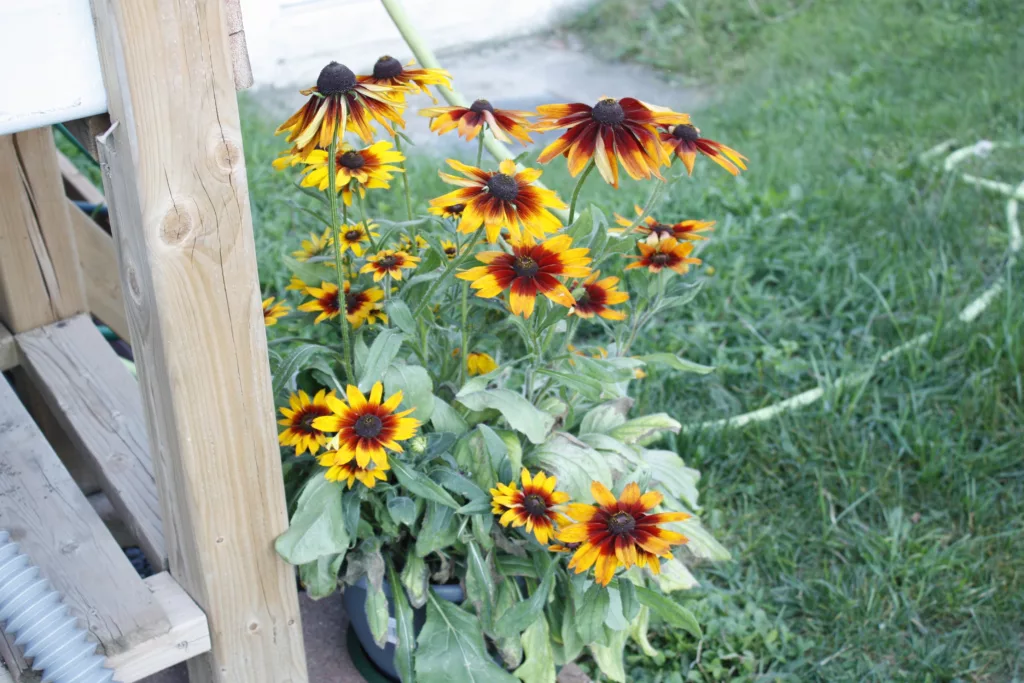
Just because you’re growing in pots, or in a “temporary” home, doesn’t mean you can’t grow perennials! The one important factor you need to consider with perennials in pots is that if you leave them outdoors in the winter they have to be extra hardy to survive in pots. The general rule is they have to be hardy to 2 zones colder than yours. The benefit to growing perennials is that they look beautiful, they come back every single year and it helps lower the costs of your garden year after year. Then if you ever end up buying a place, you’ll have a collection of perennials you can plant in your future garden.
Small spaces can still grow big gardens. You just need to get a bit creative with your garden. Take advantage of going vertical, with elevated gardens or plant stands. Adding trellises to your pots or walls gives plants space to grow up without it being a permanent change to your rental property. Climbing roses, clematis, pole beans and even sweet potato are all plants that can use a vertical growing space so you can pack in a ton of beauty without needing much space. Also, look for varieties of plants that are meant to stay small, often called “dwarf” varieties such as dwarf lilacs and even patio tomato varieties.

The fact that you’re renting shouldn’t hold you back from gardening and learning. Use this time to learn about different vegetables, flowers and perennials. Learn your lighting, how the weather affects your plants, about all the different insects and take this with you into your future gardens.

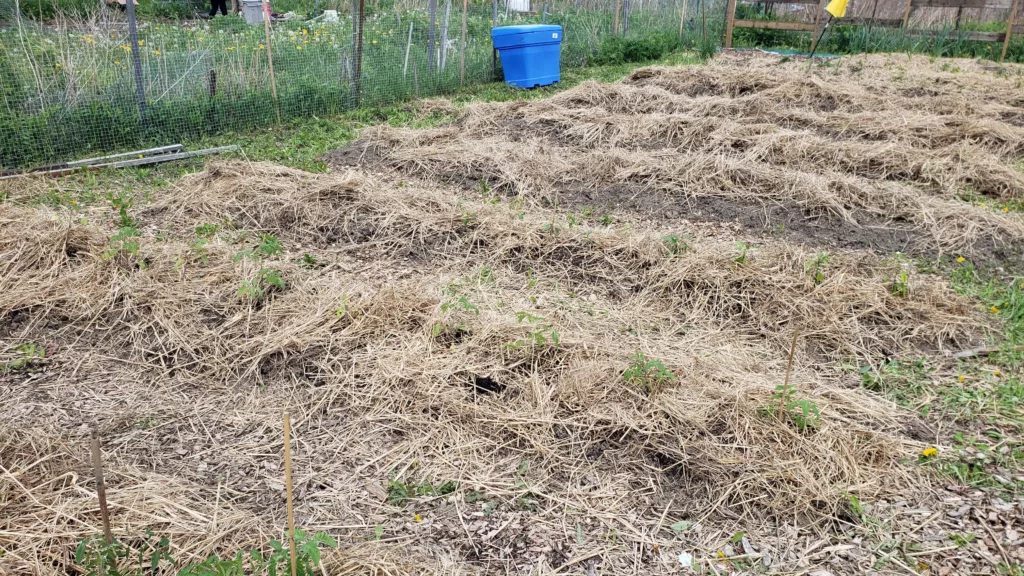
If you’re determined to garden but your landlord refuses to allow you to garden, look for a community garden plot or allotment. These can be run by the city that you live in, by your neighbourhood community association, at a farm or even one that is completely volunteer run. You can usually find a community garden from a quick internet search, but also joining a plant group in your city or neighbourhood can help you find a location. Be mindful that there is generally a waitlist for community gardens that can take up to a few years before you get a plot – but it’s worth the wait!

Gardening Advice for Short Season Gardeners
Privacy Policy • Terms and Conditions
© 2025 by Urban Gardening Canada